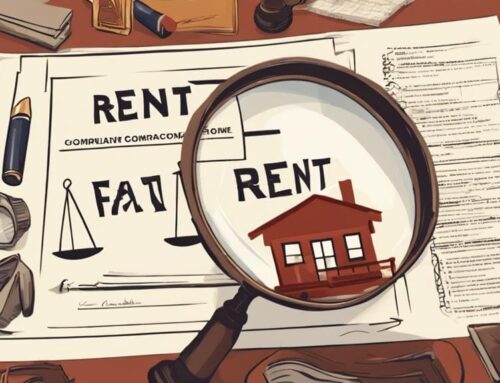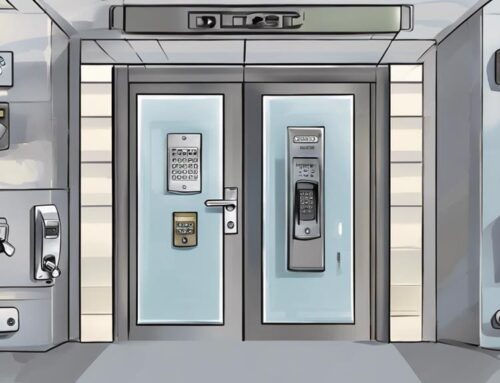In Texas, commercial building security regulations require compliance with legislation such as fire system monitoring and implementing updated security measures. Guarantee fire alarm systems are continuously monitored by licensed companies. Install strong security systems, sufficient lighting, and surveillance to prevent crime. Property owners must follow legislative amendments that enhance safety and security standards. Liability for insufficient security can arise if crimes were foreseeable and preventable. Adherence to these regulations and proactive measures helps maintain compliance and safety. Keep exploring to understand all detailed requirements and nuances.
Key Takeaways
- Recent legislative amendments require updated security systems for compliance with heightened security standards.
- Commercial properties must implement robust access control and emergency protocols.
- Adequate lighting in parking lots and around building perimeters is mandated.
- Continuous monitoring of fire alarm systems by licensed companies is required.
- Property owners must maintain high-quality surveillance and secure locks to prevent crime.
Tenant Rights and Responsibilities
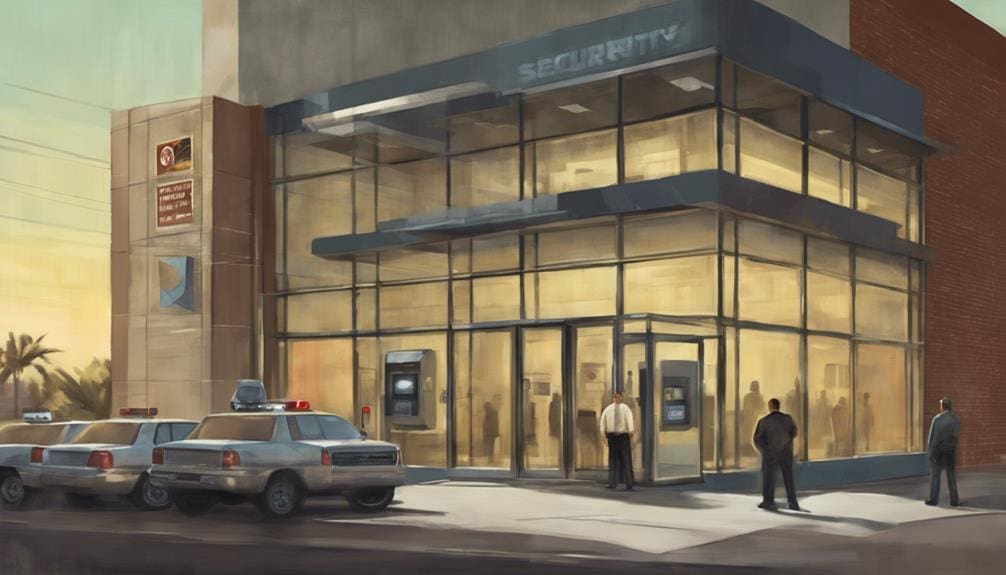
Under Chapter 93 of Texas law, tenants have specific rights and responsibilities that guarantee fair treatment and clear guidelines in commercial rental agreements. As a tenant, you’re entitled to several protections, including the right to reentry if you’re unlawfully locked out of the leased premises. This means that if a landlord attempts to deny you access without following legal procedures, you have the right to regain entry.
Another critical aspect of tenant rights is the handling of your security deposit. Texas law mandates that landlords return your security deposit within a specified timeline, typically 60 days, after the lease ends. They can only make deductions for damages beyond normal wear and tear, and must provide an itemized list of any deductions made. This promotes transparency and fairness in the return of your funds.
Additionally, landlords can’t arbitrarily interrupt utility services, ensuring you have continuous access to essential services. If you abandon the leased premises, specific procedures must be followed to protect your property rights.
Understanding these key tenant rights helps you navigate commercial leases effectively and maintains a balanced, professional relationship with your landlord. This knowledge fosters a sense of belonging within the commercial rental community.
Landlord Rights and Obligations

As a landlord in Texas, you have specific rights and obligations regarding security deposits and abandoned property.
You must return security deposits promptly, with new owners assuming responsibility for any deposits held.
Additionally, you have the right to store and dispose of abandoned tenant property after following the required timelines.
Security Deposit Regulations
Landlords in Texas must refund security deposits within 30 days of lease termination, guaranteeing all deductions are itemized and specified in writing. This requirement, laid out in the Texas Property Code, aims to maintain transparency and fairness between landlords and tenants.
If you’re a landlord, you need to document any deductions clearly and provide a detailed list to your tenant, outlining reasons for each charge.
Failure to comply with these regulations can result in significant penalties. If you don’t return the security deposit within the stipulated time or fail to provide an itemized list of deductions, you could be liable for the full deposit amount plus potential additional damages. It’s essential for you to keep accurate records of all transactions related to security deposits to avoid any legal complications.
Tenants also have responsibilities. They must provide you with a forwarding address in writing to receive their security deposit refund. Without this, the clock on the 30-day return period doesn’t start.
Abandoned Property Handling
Texas property laws grant landlords specific rights and obligations regarding the storage and disposal of abandoned tenant property. As a property owner, it’s crucial to adhere to these regulations to avoid legal repercussions.
When a tenant vacates and leaves belongings behind, Texas law mandates you to follow specific timelines before you can store or dispose of the abandoned property. Initially, you must provide written notice to the tenant, typically allowing a minimum of 60 days for them to reclaim their items. If the tenant fails to respond, you have the right to store the items at their expense or dispose of them.
It’s vital to document all actions taken, including notices sent and dates of storage or disposal.
New property owners also inherit these responsibilities. When acquiring a property with abandoned tenant belongings, you must comply with the same procedures and timelines established by Texas law. Ignoring these guidelines can result in legal consequences, including potential lawsuits for wrongful disposal.
Forcible Detainer Suits
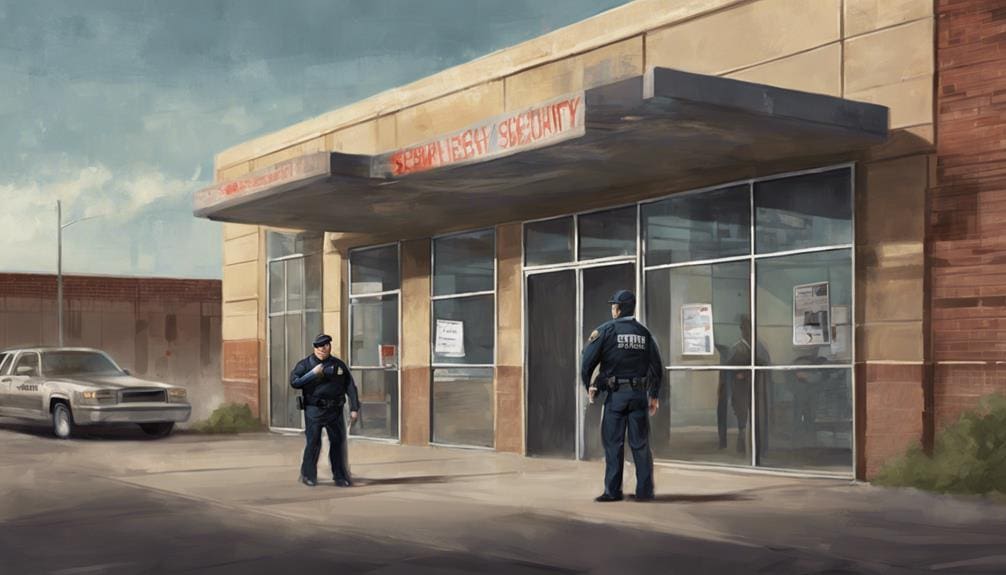
Forcible detainer suits allow landlords to legally reclaim possession of their property when tenants fail to comply with lease terms. Often, these suits arise due to non-payment of rent, lease violations, or a tenant’s refusal to vacate. As a landlord, you must adhere to specific notice requirements before filing a forcible detainer suit. This guarantees that tenants are given fair warning and an opportunity to rectify the situation.
Here are the primary reasons and steps involved in forcible detainer suits:
| Reason | Notice Requirement |
|---|---|
| Non-payment of Rent | Written notice to pay or vacate |
| Lease Violations | Notice detailing the violation and required corrective action |
| Refusal to Vacate | Final notice to vacate the premises |
Notice requirements are essential. For example, in cases of non-payment of rent, you must provide written notice demanding payment or vacating the property. If the tenant fails to comply, you can proceed with the suit. Tenants have the right to respond and defend themselves in court. If the court rules in your favor, you regain possession of your property, potentially leading to eviction of the tenant.
Understanding and following these steps not only guarantees compliance with Texas regulations but also fosters a fair and respectful relationship between landlords and tenants.
Legal Procedures
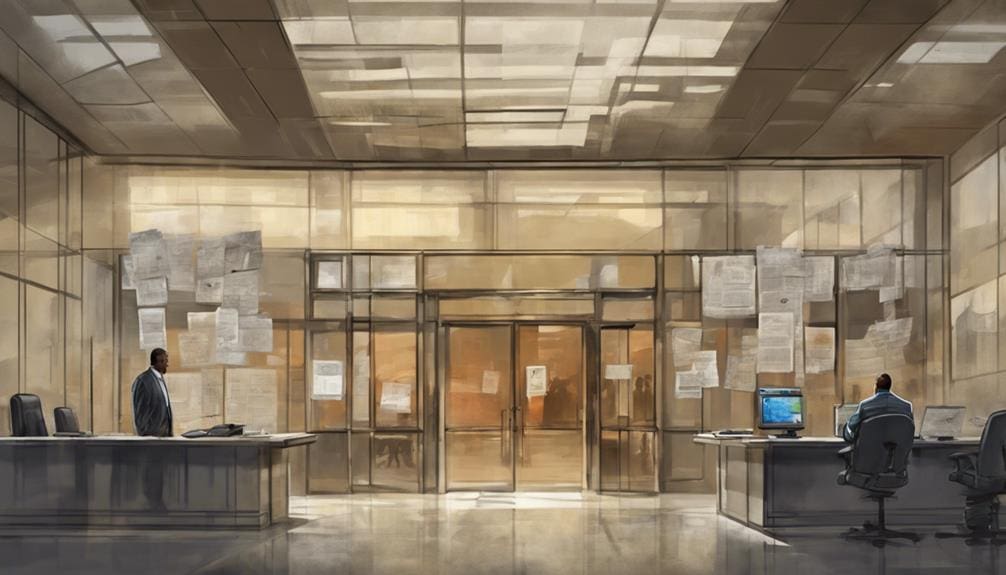
When handling security issues in your commercial property, you must comply with court orders and understand the associated filing fees and costs.
Failing to follow these legal procedures can result in significant penalties. Ensuring adherence to these requirements is essential for maintaining security and avoiding legal repercussions.
Court Order Compliance
Ensuring adherence with court orders is vital for landlords and tenants involved in commercial building security disputes. Court order adherence is a pivotal aspect of the legal procedures in Texas, particularly when dealing with issues like eviction procedures or the return of security deposits.
Ignoring a court order can lead to severe legal consequences, including contempt of court charges, fines, and other penalties.
For landlords, following court orders might mean adhering strictly to eviction procedures mandated by the court. This could involve providing proper notice to tenants, filing necessary documentation, and executing the eviction only after court approval.
Tenants, on the other hand, must comply with court directives, such as vacating the premises by a specified date or paying outstanding amounts.
Failure to comply with these court orders not only disrupts the legal process but also exposes you to additional legal actions.
It’s essential to understand that court order adherence is non-negotiable and guarantees that all parties fulfill their legal obligations. This adherence helps maintain a fair and orderly system, fostering a sense of community and trust among those involved in commercial real estate.
Filing Fees and Costs
Understanding the filing fees and associated costs is fundamental when pursuing legal actions related to commercial building security regulations in Texas. Each legal procedure requires you to pay specific filing fees mandated by the court. These fees aren’t optional and must be budgeted for accurately to avoid any delays or complications in your legal proceedings.
The court outlines the costs associated with filing legal actions or pursuing claims under security regulations. It’s important to familiarize yourself with these costs beforehand to make sure you’re prepared financially. Typically, the filing fees cover the administrative expenses incurred by the court for processing your case. In some instances, additional costs may arise, such as service fees for delivering legal documents or charges for obtaining certified copies of court records.
Proper budgeting for filing fees and associated costs is necessary to effectively engage in legal procedures related to commercial building security regulations. By understanding and planning for these expenses, you can navigate the legal system more smoothly and guarantee that your case proceeds without unnecessary financial setbacks.
This preparedness not only supports your legal strategy but also fosters a sense of belonging within the regulated community, knowing you’re adhering to the required legal standards.
Legislative Amendments

Recent legislative amendments in Texas have heightened security standards for commercial buildings, requiring updates in security systems, access control, and emergency protocols. These changes aim to enhance the safety of commercial properties and ensure compliance with the latest security regulations.
As a property owner, it is crucial to stay informed about these legislative amendments. Commercial properties now need to implement upgraded security systems that meet the new standards. This includes installing advanced surveillance cameras, integrating sophisticated access control mechanisms, and establishing more robust emergency response procedures.
Understanding and complying with these amendments is essential for creating a secure environment for tenants, employees, and visitors. The legislative changes emphasize aspects such as real-time monitoring, secure entry points, and comprehensive emergency plans that are crucial in today’s security landscape.
Crime Prevention Measures

To effectively prevent crime in commercial buildings, you must implement thorough security measures that address common vulnerabilities such as inadequate lighting, high tenant turnover, and insufficient surveillance. Proper lighting is essential, especially in parking lots and around building perimeters, to deter potential criminals. Make sure that all areas are well-lit and regularly maintained to eliminate dark spots where criminal activities could occur.
High tenant turnover can introduce security risks, making it essential to have robust crime prevention measures in place. Implementing detailed background checks and maintaining accurate records of all tenants can help mitigate these risks. Additionally, updating access controls and rekeying locks between tenancies will enhance security.
Inadequate security systems leave commercial properties vulnerable. Invest in high-quality surveillance cameras, alarm systems, and secure locks to protect your building. Surveillance cameras should cover all entry points and high-traffic areas, offering both real-time monitoring and recorded footage for future reference.
Training your security personnel is also crucial. Untrained guards can compromise the safety of the building, so make sure they’re well-versed in emergency procedures and regular protocols. By addressing these aspects, you create a safer environment that fosters a sense of belonging and security for all occupants.
Inadequate Security Claims

Property owners can face liability for inadequate security if crimes on their premises were foreseeable and preventable. Negligence in providing adequate security measures can lead to lawsuits and compensation claims. To protect themselves, owners must be aware of the potential risks and implement appropriate safety measures.
Key elements in inadequate security claims include:
- Crime Statistics: Demonstrating a history of criminal activities in or around the property.
- Safety Measures: Evaluating the adequacy of existing security protocols, such as lighting, surveillance cameras, and security personnel.
- Foreseeable Dangers: Establishing that the property owner knew or should have known about the risks.
- Prior Incidents: Presenting evidence of previous crimes on or near the property to show a pattern of danger.
By addressing these factors, property owners can better safeguard the public and reduce the risk of negligence claims. Implementing robust security measures isn’t just a legal requirement; it’s a way to foster a safe community.
Understanding your obligations can help you avoid costly compensation claims and enhance the safety of your premises. Always stay informed and proactive about security to create a welcoming environment for everyone.
Fire System Monitoring

Ensuring your commercial building’s fire alarm system is continually monitored is fundamental for compliance with Texas regulations and overall safety. Texas mandates that fire alarm systems in commercial properties must be under constant surveillance by licensed fire alarm companies. These companies are responsible for monitoring not just fire alarm systems but also sprinkler systems, offering a thorough approach to fire safety.
Supervisory service is a crucial element of this monitoring process. Licensed fire alarm companies must guarantee that all fire systems are functioning correctly at all times. This involves regular checks and immediate alerts if any part of the system malfunctions or needs maintenance. By following these supervisory service requirements, you significantly decrease the risk of undetected fire hazards.
Compliance with the Texas Administrative Code guidelines for monitoring is essential. Failing to meet these standards can result in severe consequences, such as substantial fines and potential business closure.
Why Choose Low Rate Locksmith Texas?
Low Rate Locksmith Texas is your top choice for commercial building security. As a licensed locksmith, we ensure that our services meet all Texas security regulations. Our team of certified locksmiths is highly trained and trustworthy, providing professional services that align with state laws.
We specialize in installing high-security locks and advanced surveillance systems, ensuring your business complies with legal requirements. Choosing Low Rate Locksmith Texas means investing in top-quality security measures and the assurance of legal compliance, making us the best locksmith service provider in the state.
Frequently Asked Questions
What Is Section 93.007 in Texas Property Code?
Section 93.007 of the Texas Property Code outlines your responsibilities as a landlord regarding abandoned tenant property. You must store and dispose of the property following specific timelines and procedures. This guarantees you evade legal issues and comply with the law.
Not adhering to these steps can lead to disputes, penalties, and potential legal action. It’s important to understand and follow these guidelines to maintain a good landlord-tenant relationship.
What Is Section 93.012 of the Texas Property Code?
Imagine you’ve just sold your commercial property. Coincidentally, Section 93.012 of the Texas Property Code kicks in. You’re required to inform your tenants about the new owner’s name and address promptly.
This regulation guarantees your tenants can maintain lease-related communications seamlessly. If you fail to comply, legal consequences await.
This rule fosters a sense of belonging and continuity for tenants during ownership handovers.
What Is Section 91.004 of the Texas Property Code?
Section 91.004 of the Texas Property Code requires you to implement adequate security measures in commercial buildings. You must take reasonable steps to protect tenants, employees, and visitors from foreseeable crimes.
Failure to comply can result in legal liabilities. Think about installing proper lighting, surveillance cameras, and access controls to meet these requirements.
What Is Section 93.003 of the Tex Prop Code?
Imagine you’re a captain steering a ship through rough seas. Section 93.003 of the Texas Property Code is your compass, guiding you to minimize financial losses when a tenant abandons a commercial property.
You must actively seek new tenants, re-renting at fair market value. If you fail to lessen damages, your compensation could be reduced or denied.
This guarantees fair practices, safeguarding both you and your tenants.
Conclusion
To conclude, maneuvering Texas commercial building security regulations is like piloting an intricate vessel. As a tenant, you’ve got rights and responsibilities to uphold. Landlords have obligations to guarantee safety, and failing that, you might face legal actions.
Stay informed about legislative changes and always prioritize crime prevention measures. If security’s insufficient, know your claims. Lastly, make sure fire systems are monitored meticulously—your safety depends on it.
Keep these points in mind to sail smoothly through Texas regulations.



